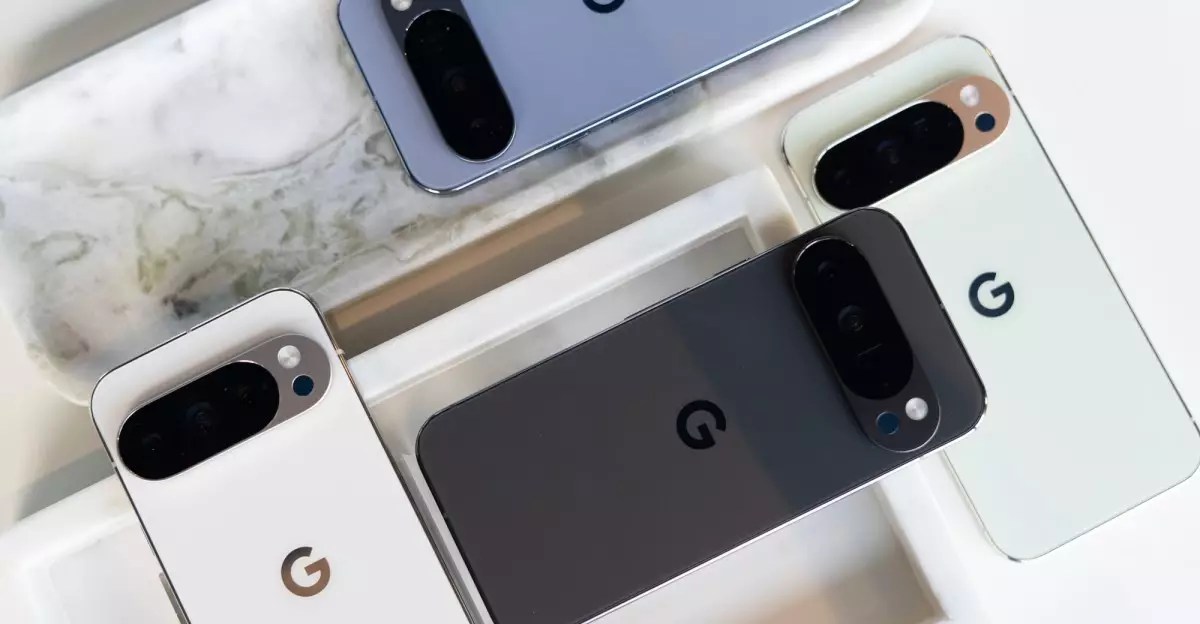Google’s flagship smartphone line, the Pixel, has long been celebrated for its clean Android experience, impressive camera capabilities, and innovative AI features. The latest iteration, the Pixel 10, despite resembling the Pixel 9 at a casual glance, introduces a host of noteworthy enhancements that elevate user experience and set a new standard for premium smartphones. Unlike superficial design changes, these updates reflect Google’s commitment to delivering smarter, more intuitive devices capable of seamlessly fitting into diverse lifestyles.
Among the most striking upgrades is the integration of Pixelsnap—a magnetic attachment system that signifies Google’s strategic move toward creating a more modular ecosystem. This feature is nothing short of transformative, redefining how users interact with their devices on a daily basis. The magnetic ring ensures effortless attachment of accessories like wallets, stands, or portable batteries, eliminating the common frustrations associated with wireless charging misalignment. This seemingly simple addition actually rewires how users perceive convenience, making their phones not just a gadget but a versatile hub tailored to individual needs.
Google’s decision to embed such a MagSafe-style system demonstrates its deep understanding of contemporary consumer habits. It transforms the Pixel from a static device to an adaptive companion that supports quick, efficient accessory swaps—saving time and reducing hassle. This development signals a shift in smartphone design philosophy: emphasizing ease of use without sacrificing sophistication. It subtly encourages users to think of their Pixel as a central piece of their lifestyle, rather than just a communication tool.
Camera Capabilities: A Leap Forward or a Step Back?
Picture quality has always been a cornerstone of the Pixel experience. The Pixel 9, with its impressive camera system, set the bar high, but the Pixel 10’s camera system presents a nuanced blend of improvements and compromises. The addition of a dedicated telephoto lens is a significant milestone, marking Google’s acknowledgment of the importance of versatility in mobile photography. For those who love capturing distant subjects or need better portrait framing, this lens is a game-changer. It offers crisper, more detailed images without relying solely on digital zoom, which often degrades quality.
However, this upgrade comes with subtle trade-offs—namely, slightly smaller main and ultrawide sensors compared to the Pixel 9. While the Pixel 9’s larger sensors promised more detail and better low-light performance, Google is optimistic about the capabilities of its new Tensor G5 chip. The promise is that software-driven enhancements, paired with superior processing power, will mitigate the sensor size reduction. Yet, this leaves the real-world comparison uncertain until thorough testing confirms whether the Pixel 10 can truly match or surpass its predecessor’s photographic prowess.
Moreover, the shift in hardware specs signals a broader trend: Google is prioritizing computational photography and AI-driven image processing over sheer sensor size. This approach aligns with Google’s core strength—artificial intelligence—and underscores a strategic move to push the boundaries of what software can accomplish in mobile imaging. Whether this will lead to noticeably better photos or just more sophisticated processing remains to be seen, but it undeniably shifts the narrative toward smarter photography, rather than just more hardware.
The Heart of the Matter: Power, Performance, and User Impact
Performance-wise, the Pixel 10 is powered by Google’s new Tensor G5 chip, promising enhanced speed, efficiency, and improved multimedia handling. This is a clear signal that Google recognizes the importance of processing power in a flagship device. The chip’s advanced AI capabilities and higher quality video processing promise a smoother, more intelligent experience—whether you’re gaming, editing videos, or using AI-driven features like Magic Cue, a proactive assistant designed to anticipate user needs.
Price-wise, the Pixel 10 starts at $799, positioning itself as an attractive option for consumers seeking flagship performance without reaching the exorbitant prices of other premium phones. For many, the Pixel 10’s value proposition lies in its blend of affordability and innovative features, especially with the inclusion of the telephoto lens—a feature that was conspicuously absent in previous base models. This move suggests Google is targeting a broader audience, enticing users who seek versatile photography and robust performance without a premium price tag.
Overall, the Pixel 10’s evolution—though subtle on the surface—underscores Google’s strategic focus on integrating hardware innovations with sophisticated AI. The device aims to deliver a smarter, more adaptable experience that anticipates user needs, seamlessly blending hardware advancements with software-driven intelligence. As Google continues refining its vision of the ideal smartphone, the Pixel 10 stands not merely as an incremental upgrade but as a testament to the company’s unwavering pursuit of excellence in mobile technology.


Leave a Reply